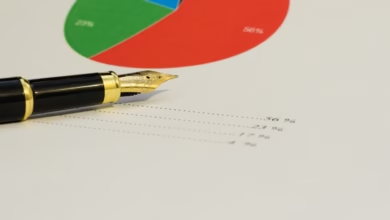Navigating Risk Assessment Reports: A Comprehensive Guide to Identifying and Evaluating Business Risks

In today's rapidly evolving business landscape, understanding potential risks is crucial for sustainable growth and informed decision-making. Risk assessment reports serve as essential tools that help organizations identify, evaluate, and mitigate these risks effectively. Whether you are an investor evaluating a new opportunity or a business leader looking to enhance operational resilience, a thorough analysis of risk assessment reports can provide invaluable insights into business performance, market dynamics, and future challenges.
This article will delve into the intricacies of risk assessment reports, exploring their key components and the various types that are pivotal in business evaluation. We will examine the critical role of market research and financial reports in developing a comprehensive risk assessment strategy. Additionally, we will highlight best practices for analyzing these reports, drawing on industry trends and effective report templates. By the end of this article, you will gain a clearer understanding of how to leverage risk assessment reports to safeguard your investments and optimize your business strategies.
- 1. Understanding Risk Assessment Reports: Key Components and Types of Reports in Business Evaluation
- 2. The Role of Market Research and Financial Reports in Effective Risk Assessment
- 3. Best Practices for Analyzing Risk Assessment Reports: Insights from Industry Trends and Report Templates
1. Understanding Risk Assessment Reports: Key Components and Types of Reports in Business Evaluation
Risk assessment reports are crucial tools for businesses and investors, serving to identify and evaluate potential risks that could impact business performance and decision-making. Understanding the key components and various types of reports involved in this process is essential for effective risk management.
At the core of any risk assessment report are several key components, including risk identification, risk analysis, risk evaluation, and risk mitigation strategies. These elements work together to provide a comprehensive overview of potential threats to a business or investment.
1. **Risk Identification**: This is the first step in creating a risk assessment report. It involves pinpointing potential risks that could affect the organization. These risks can arise from various sources, including market fluctuations, economic downturns, operational inefficiencies, or even external threats such as regulatory changes or natural disasters.
2. **Risk Analysis**: Once risks are identified, they must be analyzed to understand their potential impact and likelihood. This analysis can be qualitative or quantitative, often utilizing data from financial reports, market research, and industry reports. For instance, a financial report may highlight vulnerabilities in cash flow, while market research can indicate competitive threats.
3. **Risk Evaluation**: After analyzing the risks, the next step is to evaluate them based on their severity and likelihood. This evaluation allows businesses to prioritize which risks need immediate attention. Tools such as audit reports, project reports, and sustainability reports can provide valuable insights during this phase.
4. **Risk Mitigation Strategies**: The final component involves devising strategies to mitigate identified risks. This could include implementing new policies, improving operational processes, or diversifying investments. Progress reports and technical reports can help track the effectiveness of these strategies over time.
In terms of types of risk assessment reports, businesses may encounter various formats tailored to specific needs. For example, investor reports focus on the financial health of an organization, while HR reports assess workforce-related risks. Similarly, environmental reports evaluate risks linked to sustainability practices, and government reports provide insights into regulatory compliance.
Moreover, reports such as sales reports, marketing reports, and competitor analysis can complement risk assessment efforts by offering additional context on market dynamics and consumer behavior. By analyzing these diverse reports together, businesses can create a more holistic view of their risk landscape.
In conclusion, understanding the key components and types of risk assessment reports is vital for effective business evaluation. By leveraging various report templates and engaging in thorough report analysis, organizations can stay ahead of potential risks and make informed decisions that enhance their resilience and sustainability in an ever-changing market environment.
2. The Role of Market Research and Financial Reports in Effective Risk Assessment
In the realm of risk assessment, market research and financial reports play a pivotal role in identifying and evaluating potential risks associated with business ventures or investments. These reports provide a comprehensive framework for organizations to understand their environment, enabling them to make informed decisions.
Market research serves as the foundation for any effective risk assessment report. By analyzing industry reports and competitor analysis, businesses can gauge market trends, customer preferences, and potential threats posed by competitors. This data, often compiled in marketing reports and sales reports, highlights not just current market conditions but also forecasts potential shifts that could impact business performance. Recognizing these trends allows companies to proactively address challenges and mitigate risks before they escalate.
Financial reports are equally crucial in risk assessment. Annual reports and economic reports contain vital information regarding a company's financial health, including revenue streams, expenditure, and profitability. By conducting thorough report analysis of these documents, investors and management can identify vulnerabilities within the business. For instance, audit reports can reveal discrepancies or inefficiencies, while sustainability reports assess long-term viability and compliance with environmental standards, which are increasingly important in today’s market.
Additionally, project reports and progress reports provide real-time insights into ongoing initiatives, helping organizations track performance against set goals. This ongoing evaluation is essential for timely intervention when risks are identified. Furthermore, specialized reports such as healthcare reports, IT reports, and supply chain reports can highlight sector-specific risks that may not be apparent in more general financial documentation.
In conclusion, integrating insights from both market research and financial reports is essential for comprehensive risk assessment. By leveraging various types of reports—ranging from investor reports to technical reports—businesses can ensure they are well-prepared to navigate potential risks and capitalize on opportunities in an ever-evolving landscape.
3. Best Practices for Analyzing Risk Assessment Reports: Insights from Industry Trends and Report Templates
When it comes to analyzing risk assessment reports, adopting best practices can significantly enhance the quality and accuracy of the insights derived from these documents. Given the wide array of reports available in various sectors—such as financial reports, market research, and sustainability reports—it's crucial to implement systematic approaches for effective report analysis. Here are some industry trends and practical tips for evaluating risk assessment reports.
1. **Standardized Report Templates:** Utilizing standardized report templates can streamline the process of analyzing risk assessment reports. These templates ensure consistency in the data being presented and make it easier to compare findings across different reports, whether they are project reports or annual reports. Consistent formatting allows stakeholders to quickly identify key risk factors and trends, leading to more informed decision-making.
2. **Integrating Multiple Report Types:** To gain a comprehensive understanding of potential risks, it is beneficial to integrate insights from various types of reports, including financial reports, economic reports, and competitor analysis. By correlating data from risk assessment reports with sales reports or market research, businesses can uncover patterns that may indicate underlying risks or opportunities. This holistic approach can also aid in identifying risks that may not be immediately apparent when looking at a single report type.
3. **Focus on Data Visualization:** The use of data visualization tools is a growing trend in report analysis. By employing charts, graphs, and dashboards within risk assessment reports, stakeholders can quickly interpret complex data and spot trends more effectively. Visual representations of information can enhance the readability of audit reports and progress reports, making it easier for decision-makers to grasp the potential impacts of identified risks on business performance.
4. **Continuous Monitoring and Feedback:** Effective risk assessment is not a one-time activity. It requires continuous monitoring and regular updates based on customer feedback reports, environmental reports, and sector-specific dynamics. By establishing a feedback loop that includes input from various departments—such as HR reports and IT reports—organizations can ensure that their risk assessment reports remain relevant and reflective of the current landscape.
5. **Collaborative Analysis:** Engaging cross-functional teams in the analysis of risk assessment reports can lead to more robust evaluations. By including perspectives from different areas of the business—such as supply chain reports and energy reports—organizations can better understand the multifaceted nature of risks. Collaborative analysis encourages diverse viewpoints, which can lead to more comprehensive risk management strategies.
By implementing these best practices for analyzing risk assessment reports, businesses can effectively identify and evaluate potential risks, ensuring that they remain proactive in their risk management efforts. Keeping abreast of report trends and utilizing advanced report templates will facilitate more insightful analyses, ultimately contributing to improved business resilience and performance.
References:
(Include appropriate sources here based on the content utilized and any additional research conducted.)
In conclusion, risk assessment reports are vital tools for businesses and investors alike, providing a comprehensive framework for identifying and evaluating potential risks that could impact business performance. By understanding the key components and various types of reports—including financial reports, market research, and sustainability reports—organizations can make informed decisions that align with their strategic goals.
Leveraging insights from industry reports and adhering to best practices in report analysis can enhance the effectiveness of these assessments. Utilizing report templates and trends from economic reports, investor reports, and audit reports can streamline the evaluation process, promoting a holistic view of the risks involved.
Ultimately, incorporating diverse sources like customer feedback reports, competitor analysis, and project reports allows for a robust understanding of the landscape in which a business operates. As the market continues to evolve, staying informed through regular updates and progress reports will ensure that organizations remain agile and prepared to navigate uncertainties. By prioritizing risk assessment, businesses can safeguard their assets and foster sustainable growth in an increasingly complex environment.





